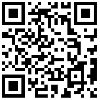In today's digital age, printers have become essential for our daily tasks. The HP LaserJet 1020 printer stands out for its efficiency, reliability, and user-friendly interface. This guide will walk you through connecting the HP LaserJet 1020 printer to your computer, ensuring a seamless setup process.
Before you begin, ensure you meet the following conditions: a computer with network access or wireless capabilities, the HP LaserJet 1020 printer driver installed, and the necessary connection tools (power adapter, USB cable, or wireless network adapter) depending on your chosen connection method.
Start by powering on your computer and navigating to your operating system. Next, connect the HP LaserJet 1020 printer to a power source, making sure the power adapter is securely plugged into an outlet. Depending on your OS, download and install the drivers for the HP LaserJet 1020 printer from the official HP website or other trusted sources.
After installing the driver, open the Control Panel and select Devices and Printers. In the "Add Printer" window, choose "Add Local Printer" and click "Next." Select "Use existing ports," choose "LPT1 printer ports," and click "Next." From the "Manufacturer" list, select "HP," then choose "HP LaserJet 1020" from the "Printer" list, and click "Next." Follow the prompts to connect the USB cable to the computer and printer's USB ports, or establish a wireless connection. Wait for the computer to automatically detect and install the printer driver; if needed, manually specify the driver location. Click "Finish" to complete the printer connection process.
Once your printer is set up, perform a test print to verify functionality. Locate the file you wish to print on your computer, right-click it, and select "Print." In the Print Settings, choose the connected HP LaserJet 1020 printer, adjust any print parameters like paper size or duplex printing, and click "Print." Wait for the printer to output your test page; successful printing indicates proper setup.
If your computer doesn't recognize the printer, ensure the USB cable or wireless network adapter is properly connected and that the driver installation was correct. Persistent issues may require restarting your computer or printer. If you encounter errors during printing, check that your print settings are correct and the file is intact. Continue to troubleshoot by restarting devices as needed. If you're unable to add the printer, confirm proper driver installation and computer recognition of the printer. Ongoing problems may warrant contacting technical support for assistance.



